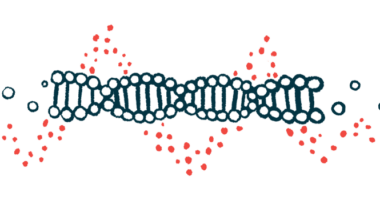FAP Not Common in Patients with Charcot-Marie-Tooth Disease Type 2, Study Reports

Lack of familial amyloid polyneuropathy (FAP)-causing mutations in patients with Charcot-Marie-Tooth disease type 2 (CMT2) means that genetic screening for FAP in this patient population is only required in clearly suspect cases, according to a new study.
The research, “Autosomal-dominant transthyretin (TTR)-related amyloidosis is not a frequent CMT2 neuropathy “in disguise,” appeared in the Orphanet Journal of Rare Diseases.
The first symptoms of FAP, also called hereditary transthyretin amyloidosis, may manifest as early as a patient’s 20s. Abnormal deposits of a protein called amyloid cause deterioration of peripheral nerves controlling sensation and movement, and of autonomic nerves regulating the function of the heart, stomach, and gut.
More than 130 mutations in the TTR gene, which cause FAP, have been identified worldwide. The disease is endemic (meaning more prevalent) in Portugal and Sweden, with some Italian regions being endemic for specific TTR mutations.
Early diagnosis is critical for effective and tailored treatment, but is limited by FAP’s variable clinical presentation in non-Portuguese populations. This had led to misdiagnosis with other neurological disorders, including CMT2.
Coincident diabetes mellitus, frequent in the elderly, could also mask FAP diagnosis. As a result, researchers have proposed considering FAP in cases presenting as immune-mediated neuropathies (nerve damage) not responding to immunomodulatory treatment.
CMT is the most frequent inherited neuromuscular disorder. Despite a considerable genetic variability, CMT has characteristic clinical features, including distal (hands and feet) weakness and atrophy, or shrinkage, and pes cavus (high-arched feet). Patients with late-onset axonal (nerve fiber) CMT2 could share clinical features with FAP, even if showing a slower disease course, the scientists noted.
Aiming to discover whether CMT could mimic FAP, the team from Italy searched for TTR gene mutations in 98 patients (51 men) classified as CMT2 and referred from all Italian regions. The patients were at least 30 (mean age 55) and had late-onset axonal CMT. All underwent neurological and neurophysiological evaluation, as well as an annual follow-up.
Clinical features were markedly different from the classic FAP presentation, as illustrated by a mean age of disease onset of 46.4 years and mean disease duration of 8.9 years. No patient had mutations in the most commonly altered genes in CMT2 — MFN2, NEFL, GDAP1, MPZ, and GJB1. Also, no disease-related TTR variants were found.
Among the study limitations, the team mentioned the small number of patients screened. Despite this, misdiagnosis of FAP in patients with CMT2 does not seem to be common, the scientists stated.
“In conclusion, our study shows that TTR testing not should be straightforward recommended in CMT2 patients but only when “red flags” TTR’s features are present,” they said. Among the suggestive signs of FAP, the scientists mentioned a rapid progressive course, carpal tunnel syndrome (compression of the median nerve in the wrist), particularly in men; cardiac symptoms, and autonomic nervous system impairment.






